The Tokai Sen-Gohyaku Rakan (One Thousand Five Hundred Arhats) is lined with 1,553 stone Buddhas.
They are scattered in the precincts of Nihon-dera Temple, located halfway up Mt.
It took 21 years to carve the stone Buddhas.
Many of the heads were destroyed during the movement to abolish Buddhism in the Meiji period (1868-1912), but those that remain and those that have been restored are all richly expressive and have different faces.
The number of 1,553 Arhats in the Tokai 1,500 Arhats is also known as the world’s largest number of Arhats in the world.
It is a bit difficult to visit all of them because they are located in the Mt.Nokogiriyama, but it is worth a visit.
Touring the precincts of Nippon-ji Temple on Mt.
The grounds of Nippon-ji Temple cover an area of 100,000 square meters on the mountainside of Mt.
It is a popular tourist destination with many attractions such as the Great Buddha of Nippon-dera Temple, Jigoku-nozoki, Hyakushaku Kannon, and the Thousand Five Hundred Arhats of the Tokai Region.
My wife and I have so far visited the Jigoku-nozoki, Hyakushaku Kannon, and the Great Buddha of Nippon-ji Temple.
One of the must-see sites, Tokai Sen’500 Arhat, can be seen by going up the mountain from the Great Buddha of Nippon-ji Temple, but we still had time, so we decided to take the route down the mountain from the Great Buddha of Nippon-ji Temple.
Toward the main hall that was accidentally destroyed by fire
Although Nippon-dera Temple covers a vast area, it has been repeatedly devastated and rebuilt throughout its long history.
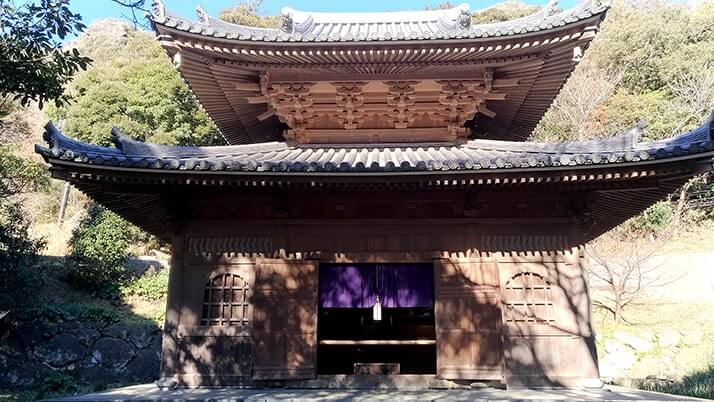
This is the main hall of Yakushi. It is a magnificent structure, but it can be seen at …….
In fact, this one was rebuilt in 2007.
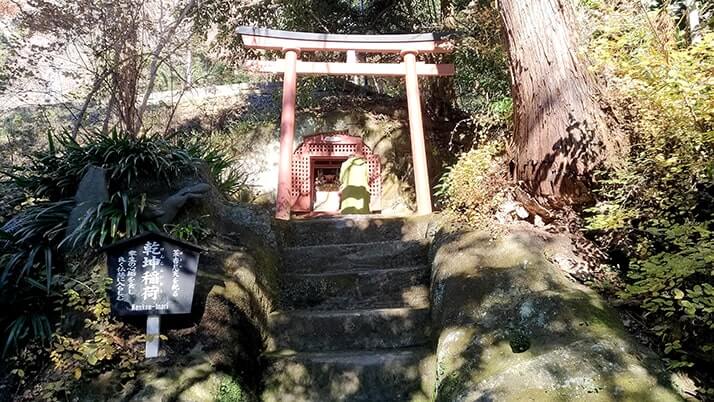
In 1939, a forest fire broke out due to the negligence of climbers.
The fire destroyed cultural properties including the main hall and other buildings. This Yakushi Main Hall was also moored in that fire.
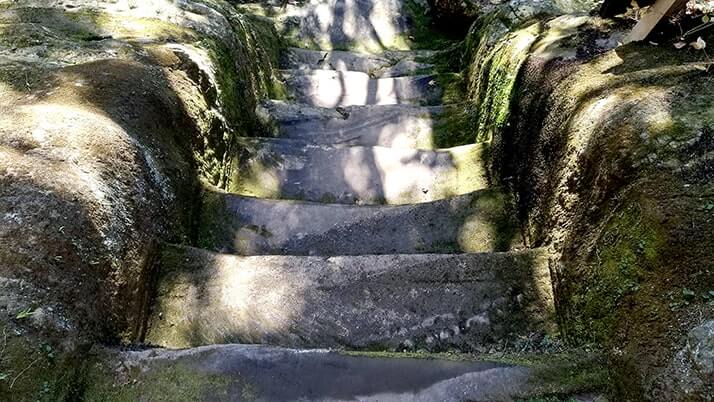
After the forest fire, reconstruction plans were immediately made.
However, due to a series of events, such as Sawtooth Mountain becoming a military fortress during World War II, reconstruction was delayed until the present day.
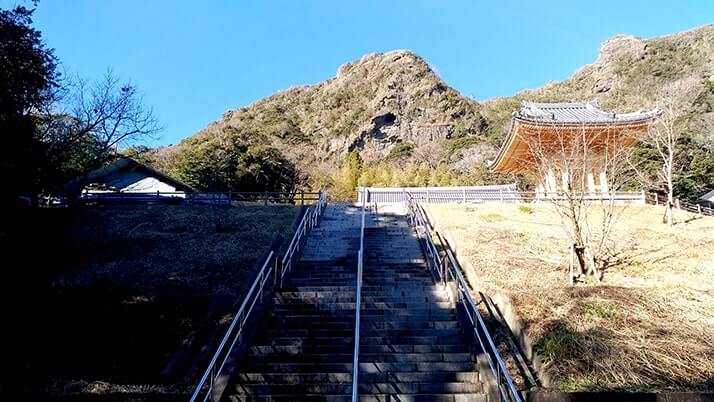
Because of this, Nihon-dera Temple has no main hall, and reconstruction is still being carried out from donations and fees from visitors to the temple.
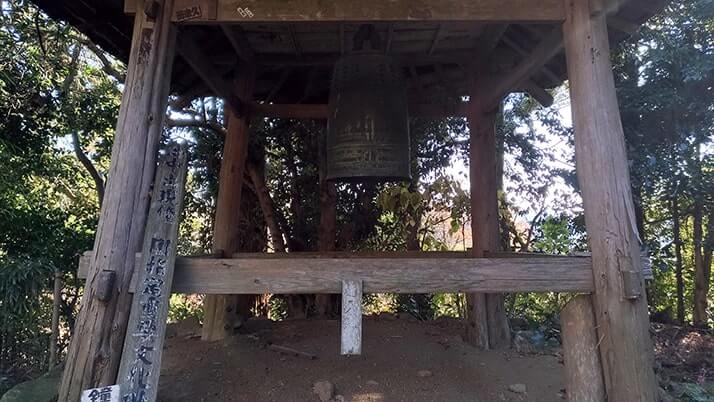
There were many national treasures such as Buddhist statues among the burned items. It is a tragic fate.
Although the temple is in the midst of reconstruction, there is a bell of the Japan Temple, which is designated as a national important cultural property.
Since many people gather from the top to the central part where the Big Buddha is located, it is pleasant to take a leisurely stroll in the lower part of the temple grounds.
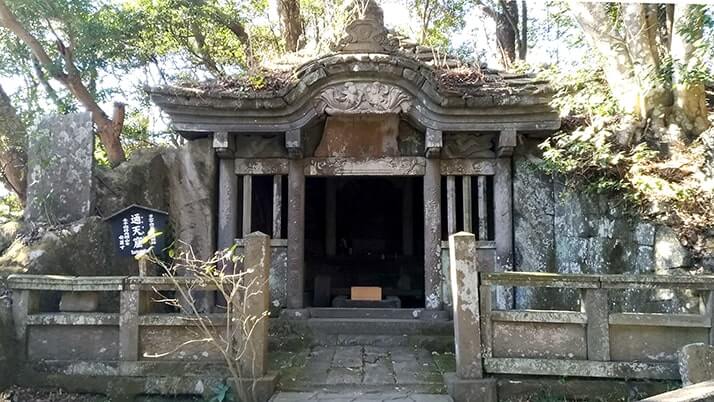
Passing by the historic Tsutenkutsu Cave, you will climb the mountain again.
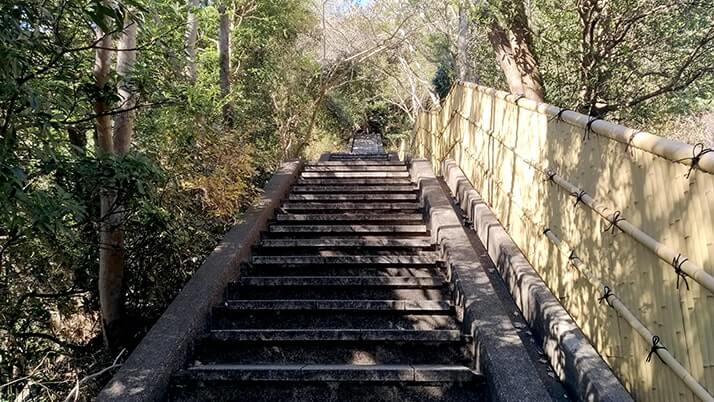
Ascend the seemingly endless stairway to the top.
As you ascend these stairs, you will come to the Daibutsuguchi Administration Office.
Tokai Sen-Gohyaku Rakan (One Thousand Five Hundred Arhats) with 1,553 stone Buddhas.)
If you climb the stairs near the Daibutsuguchi Management Office, you will reach the Tokai Senghyaku Lhakhan area.
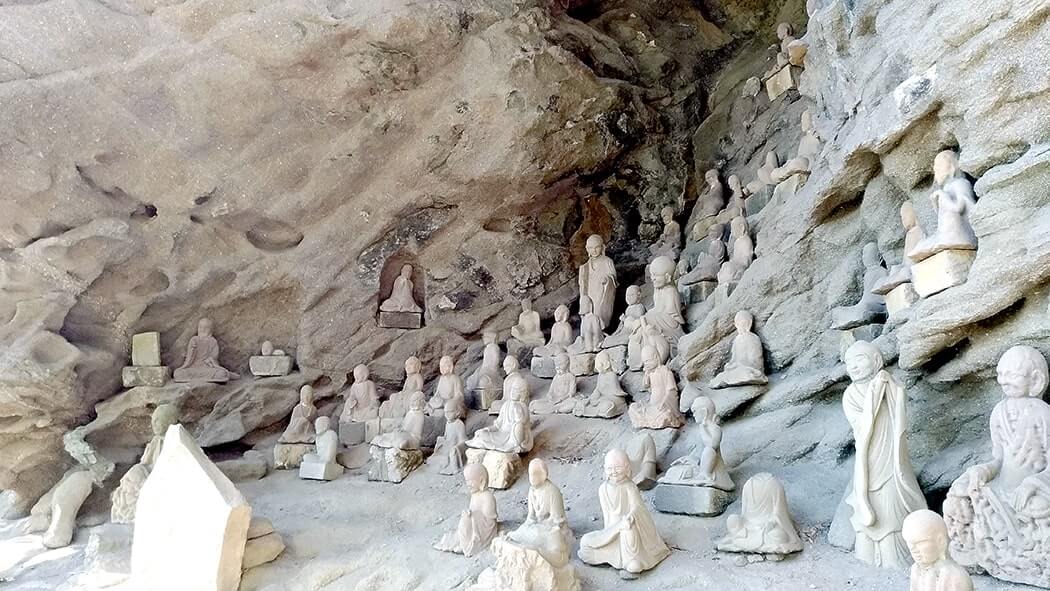
The stone Buddha is enshrined in a cave created by wind erosion.
This cave is named Gomakutsu.
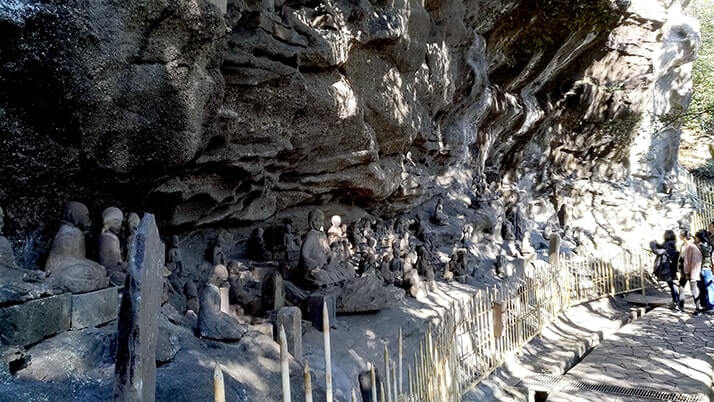
Eiji Ono Jingoro sculpted the stone Buddha for 21 years with 27 followers.
There are 1553 in all. The cave is also said to be the world’s largest Arhat sacred site because of the number of stone Buddhas.
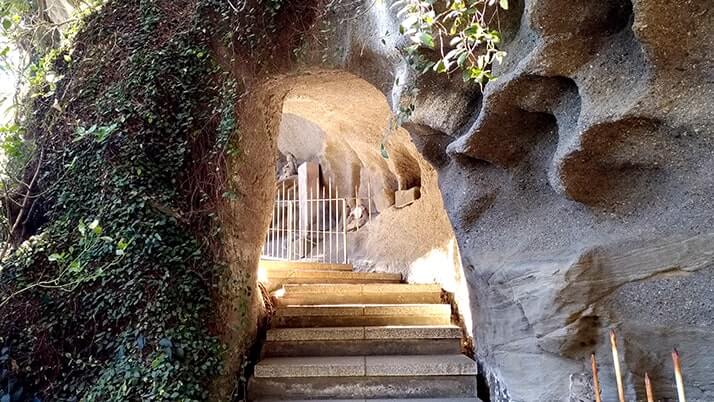
The sheer number of stone Buddhas alone is overwhelming, but the scenery created by the wind erosion of the rocks is something rarely seen anywhere else.
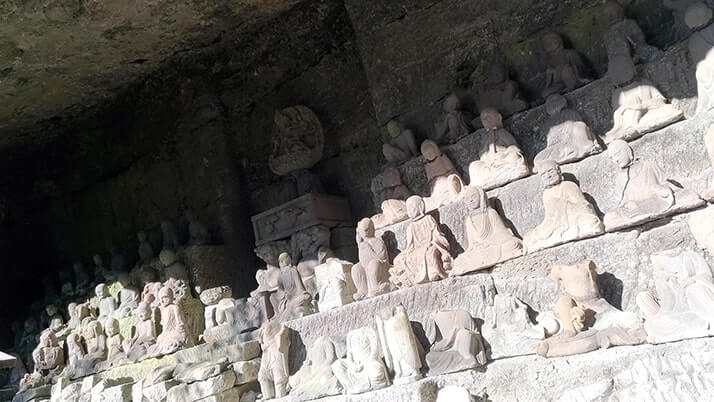
Some of the stone Buddhas in the rows have no heads.
These heads were destroyed during the Haibutsu Kishaku (movement to abolish Buddhism) in the Meiji period (1868-1912). Although most of them have been restored, there are still many headless stone Buddhas called “headless arhats.
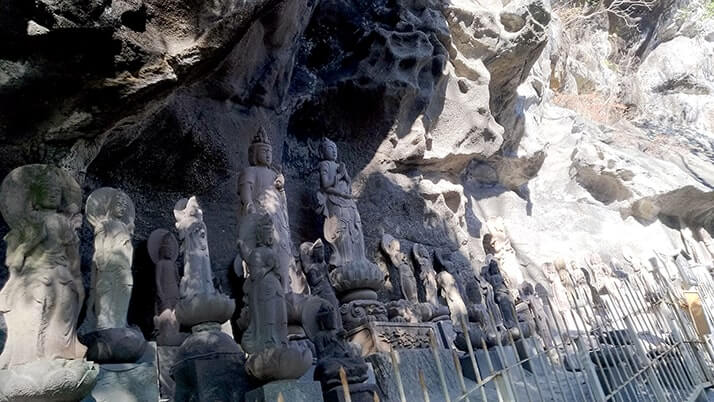
I had assumed that they were made of local stone, but it is said that the raw material used for the stone was Izu stone brought from Izu.
Each stone Buddha has a different face with a rich expression. If you look carefully, you can see a stone Buddha with a face similar to your friend’s.
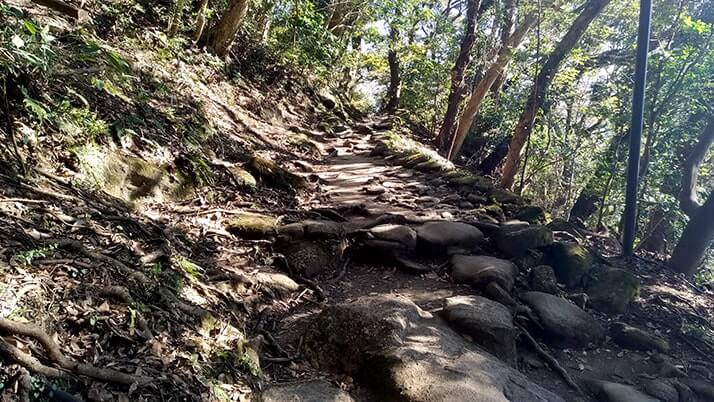
It takes some time to see all the stone Buddhas.
However, as it is said to be the largest in the world, it is on a scale that is not easy to see. It is worth seeing.
One thing to note is that you will be walking in the mountains, so be sure to wear shoes that are comfortable and non-slip.
I saw a woman in heels groping on the way to …… You are licking the mountain too much, aren’t you?
In the end, it took us about two and a half hours to visit Jigoku-nozoki, Hyakushaku Kannon, the Great Buddha of Nippon-ji Temple, and the Thousand Five Hundred Arhats of the East Sea.
You should allow plenty of time for this visit because it is in the mountain and the precincts of Nippon-ji Temple are vast and there are many things to see.

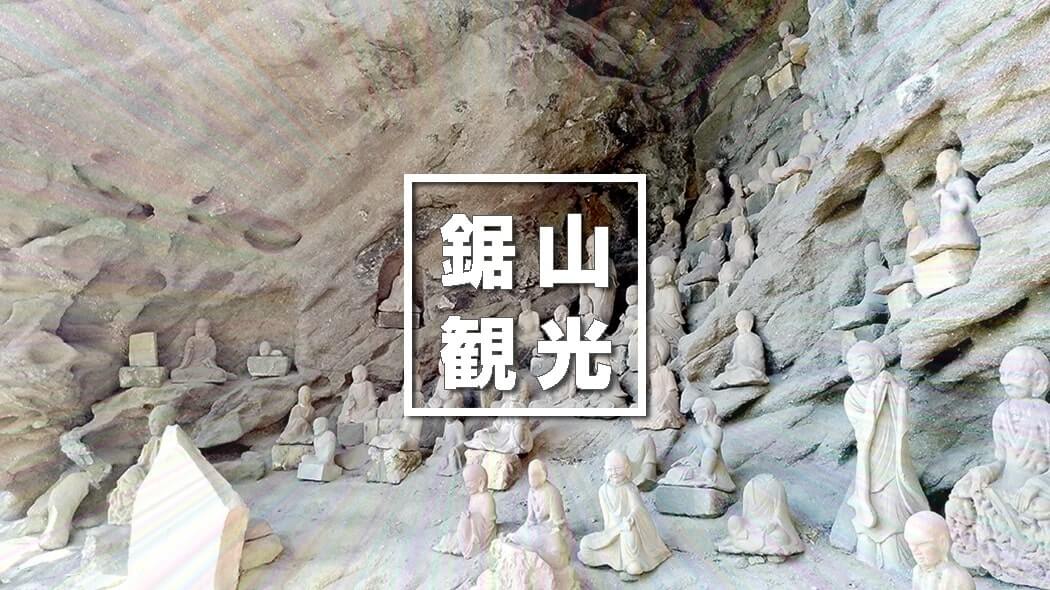





コメント